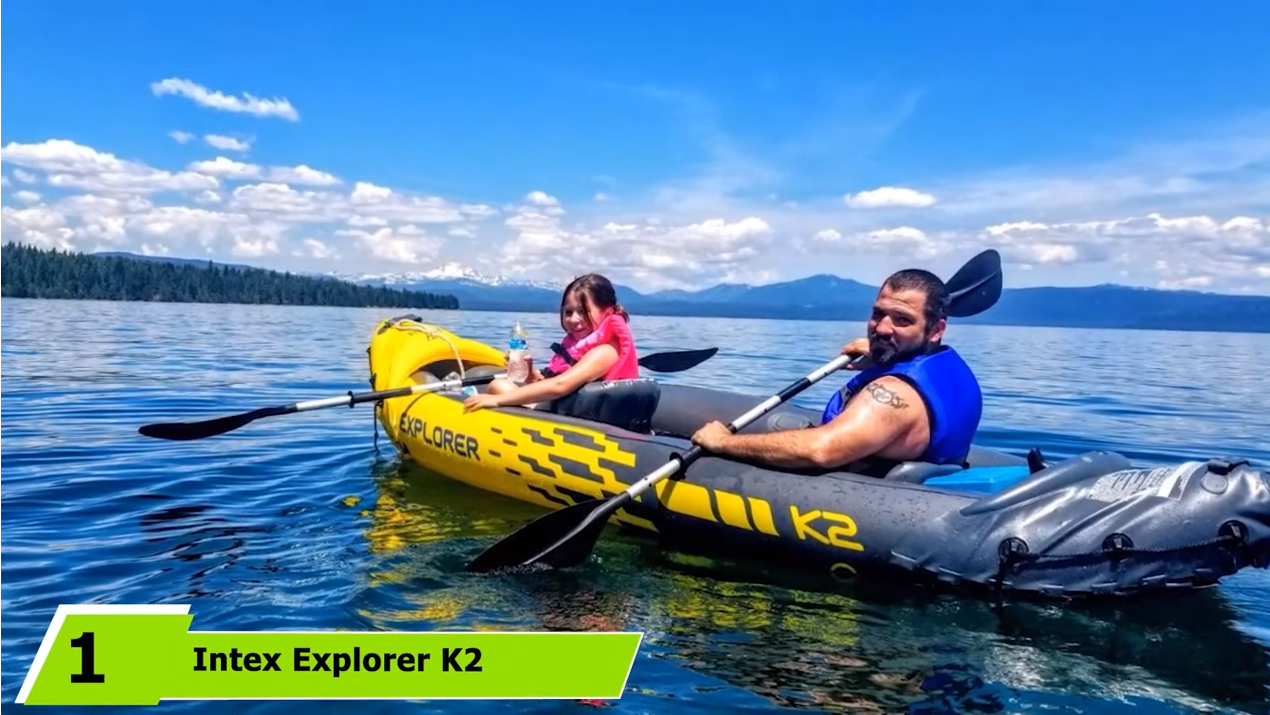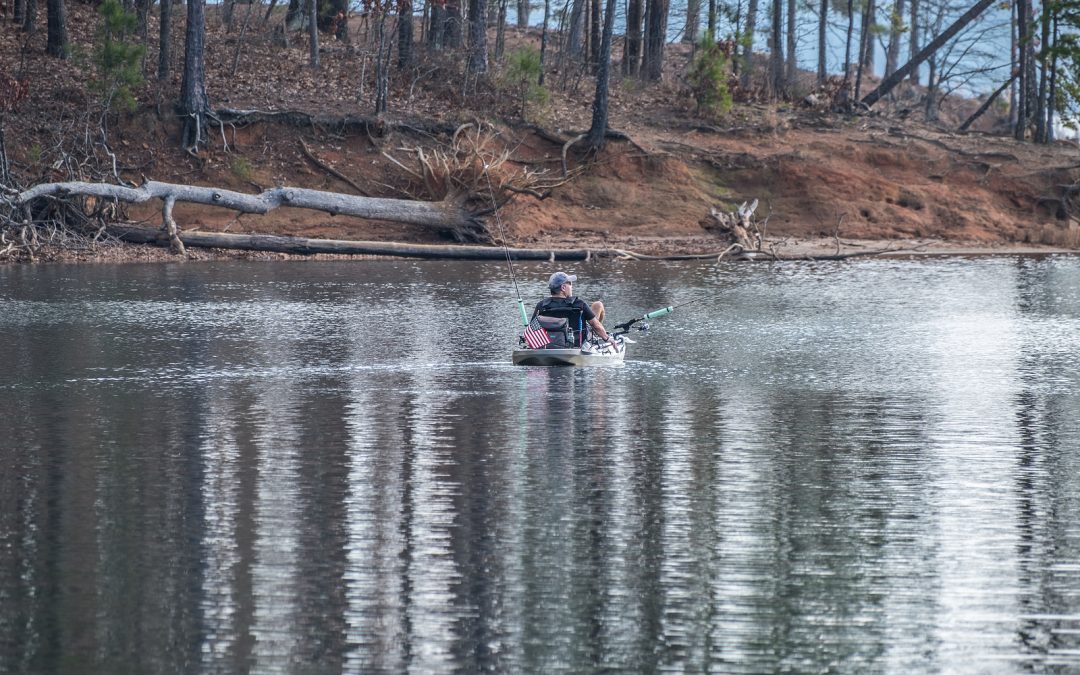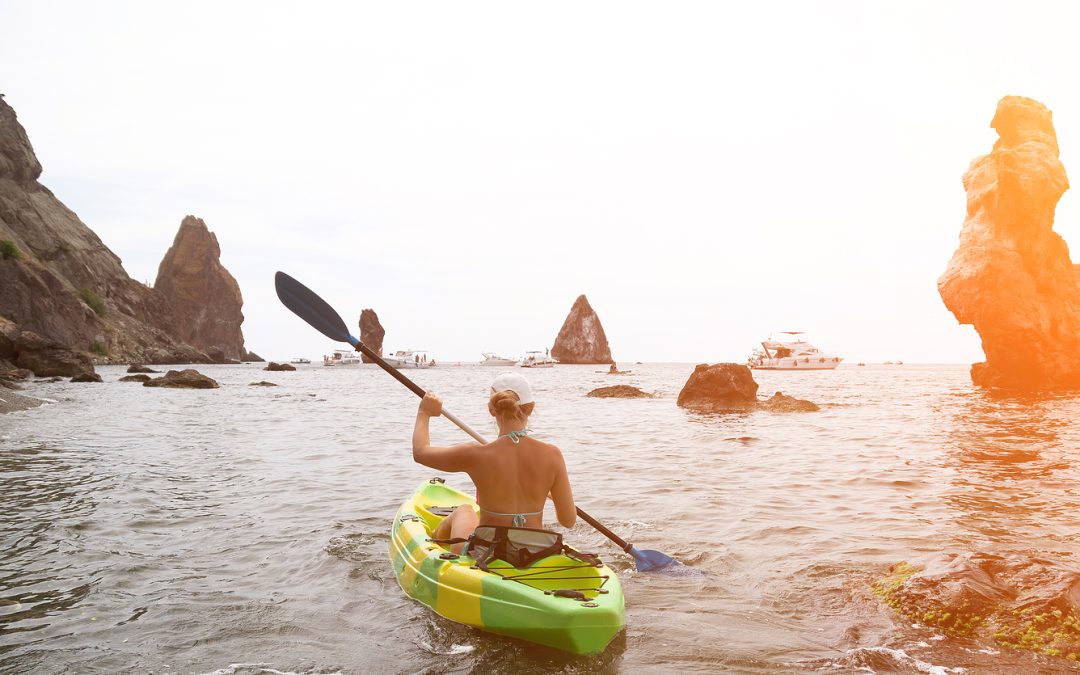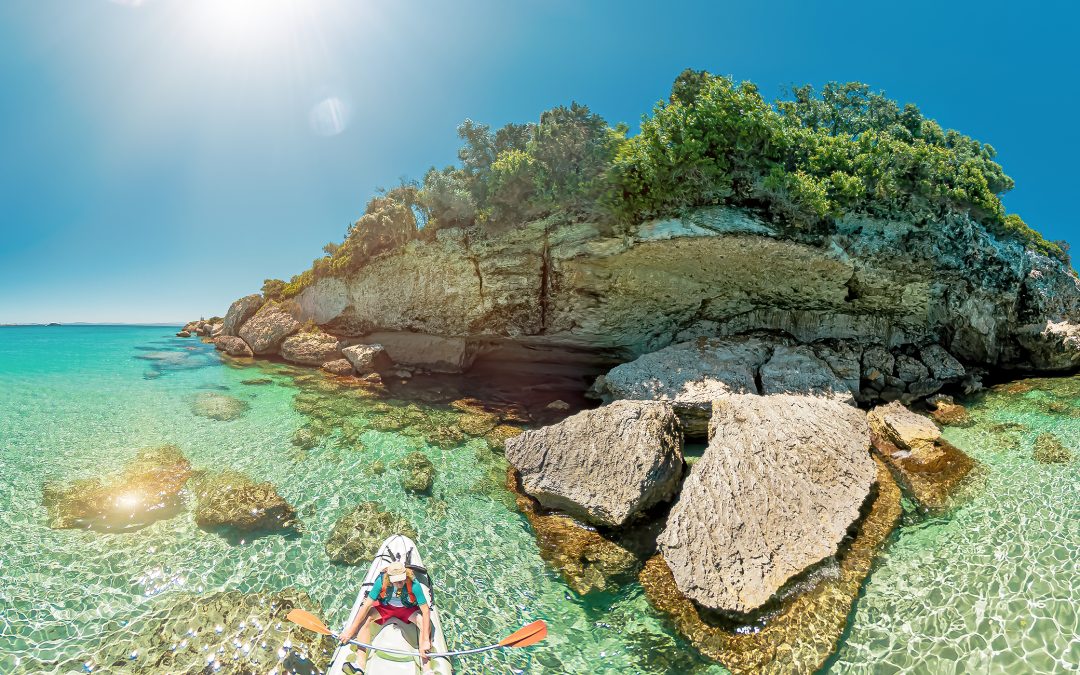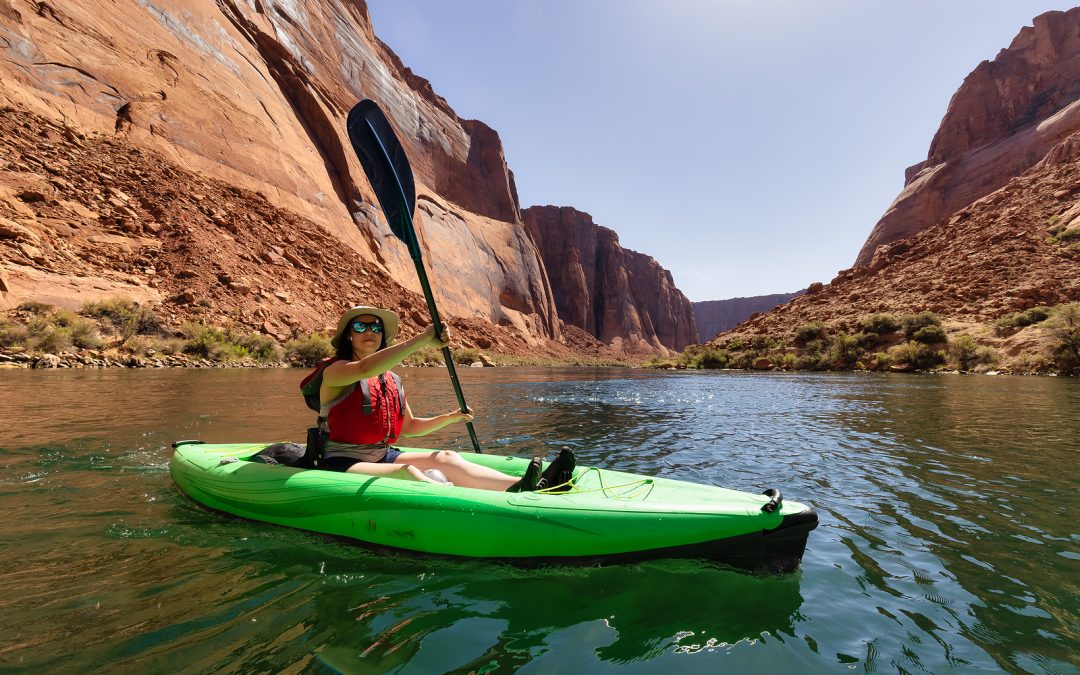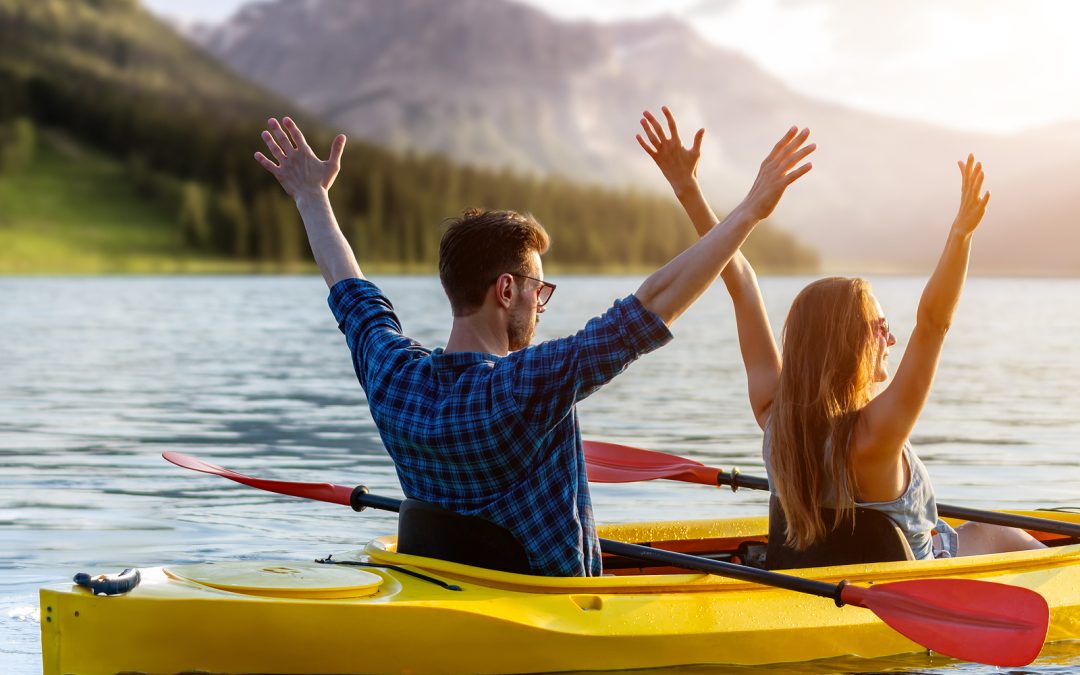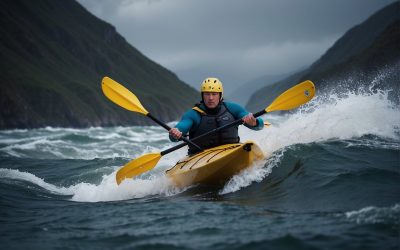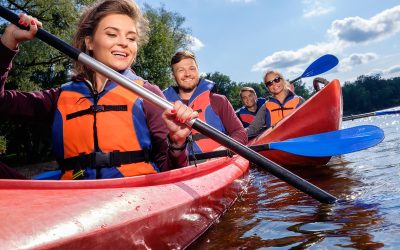Kayaking Life Vest Essentials: Safety and Selection Tips
Kayaking is a popular water sport that offers a unique way to explore the outdoors, get exercise, and connect with nature. One essential piece of equipment for any kayaker, regardless of skill level or experience, is a life vest or personal flotation device (PFD). Life vests provide crucial buoyancy and safety while on the water, helping prevent accidents and drowning.

Understanding the different types of PFDs and their features is key to finding the perfect life vest for kayaking. A well-designed vest should offer ample buoyancy, a comfortable fit, and allow for a full range of motion without restricting movement. When shopping for a kayak life vest, it’s important to consider factors such as intended use, size, and personal preferences to ensure you select the right vest for your needs.
Key Takeaways
- A life vest is an essential piece of safety gear for kayaking, providing buoyancy and helping prevent accidents and drowning.
- Consider factors such as intended use, size, and personal preferences when choosing the right life vest for kayaking.
- Proper maintenance and care can help extend the lifespan of a life vest and ensure it remains effective in providing safety and buoyancy.
Understanding Personal Flotation Devices
What Is a PFD?
A Personal Flotation Device (PFD) is an essential piece of equipment designed to provide buoyancy and help individuals stay afloat in water. PFDs are commonly used in various water-based activities such as kayaking, canoeing, and stand-up paddleboarding. It is important to note that a life jacket or life vest refers to specific types of PFDs, although many people use these terms interchangeably.
Types of PFDs
There are five types of PFDs, each classified according to their specific applications and buoyancy characteristics:
- Type I: Known as offshore life jackets, these PFDs offer the highest level of buoyancy and are suitable for rough or remote waters, where rescue may take longer.
- Type II: Near-shore vests provide adequate buoyancy in calm or inland waters, making them ideal for activities such as kayaking and canoeing near the shoreline.
- Type III: Often referred to as flotation aids, these PFDs are designed for use in calm or inland waters with a high likelihood of fast rescue. They are popular among watersports enthusiasts.
- Type IV: These are throwable devices, such as cushions and ring buoys, used to provide additional buoyancy for the person in the water.
- Type V: Special-use PFDs are designed for specific activities, such as kayaking, paddleboarding, or sailing. They often have specific features tailored to the intended use.
It is essential to choose the appropriate PFD for your water activities considering its buoyancy, comfort, and fit.
Regulatory Compliance
The United States Coast Guard approves PFDs that meet specific safety and performance standards5. When choosing a PFD, look for the Coast Guard approved label to ensure the device complies with the necessary regulations. Remember, wearing a Coast Guard approved PFD is not only a matter of safety but may also be a legal requirement depending on the water activity and location.
Footnotes
Life Vest Features for Kayaking
Material and Construction
When choosing a life vest for kayaking, it’s essential to consider the materials used and their construction. Common materials include nylon, which is lightweight, durable, and less expensive than other options. Neoprene is another popular choice, providing good insulation and comfortable wearability. Some life vests also use PVC, foam, or Gaia for added buoyancy and durability.
Fit and Sizing
Proper fit is critical for your safety and comfort on the water. Life vests for kayaking should be designed to suit various body shapes and chest sizes. Always check the manufacturer’s PFD sizing guide and try on the vest before purchasing, ensuring it fits securely around the torso without restricting movement.
Adjustability and Comfort
Adjustability is vital for achieving the perfect fit and ensuring optimal comfort while kayaking. Look for life vests with adjustable straps, ideally at the waist, chest, and shoulders. High-quality vests often include shoulder pads to reduce chafing and ventilation features for improved airflow. Wide armholes are also crucial for allowing unrestricted range of motion during paddling.
Additional Functionalities
To enhance your kayaking experience, many life vests offer extra features for convenience and utility:
- Pockets: Well-placed storage pockets provide accessible storage solutions for personal belongings or small items like snacks, keys, and a whistle.
- Lash tab and D-rings: These attachment points are designed for securing important tools, such as a knife or strobe light.
- Rod holder loops: Ideal for avid anglers, these loops help secure fishing rods during paddling breaks.
Always prioritize safety and comfort when selecting a kayaking life vest and keep in mind how the vest’s features align with your individual needs and preferences.
Choosing the Right Kayak Vest
Based on Kayaking Type
When selecting a kayak vest, it’s essential to consider the type of kayaking you’ll be doing. For whitewater kayaking and open water kayaking, a vest with a high level of buoyancy and swift rescue features is recommended. On the other hand, a fishing life jacket or fishing PFD is ideal for anglers, as it has extra pockets for gear and tackle storage. For recreational kayaking, a simple, comfortable vest with adequate buoyancy is usually sufficient.
Specialized PFDs
There are various specialized PFDs designed for different users and purposes. For instance, women-specific PFDs cater to the unique body shape and contours of women, allowing for greater comfort and fit. Similarly, PFDs for kids are designed with additional safety features and are generally more buoyant.
In addition to gender and age-specific PFDs, you can also find Type V PFDs, which are specialized life vests, and hybrid PFDs, which combine features of different life vest types. For example, an inflatable PFD offers increased buoyancy when needed and can be suitable for open water kayaking.
The Importance of Proper Fit
It is crucial to find the right fit when purchasing a kayak vest, as an ill-fitting PFD can impede your ability to swim or even be dangerous in certain scenarios. Make sure to consult the PFD sizing charts from manufacturers and try on multiple options to find the most comfortable fit.
Key factors to consider for proper fit include:
- Comfort: The vest should not restrict your movement or cause discomfort.
- Adjustability: Look for PFDs with adjustable straps that allow you to customize the fit for your body shape.
- Secure Fit: Once adjusted, the vest should remain secure and not ride up while you’re in the water.
To ensure the best fit, loosen all adjustment straps before putting on the life vest. Start by cinching the lower adjustment strap below the rib cage to anchor the jacket and prevent it from riding up. As you move up the jacket, continue to snugly tighten the straps.
Remember, choosing the right kayak vest depends on the type of kayaking, specific PFD features, and most importantly, the proper fit. By taking these factors into consideration, you will have a safe and enjoyable kayaking experience.
Safety and Buoyancy
When it comes to kayaking, safety is of utmost importance. One crucial aspect of safety is the proper use of life vests, also known as Personal Flotation Devices (PFDs). In this section, we will discuss the importance of buoyancy levels and the factors that contribute to optimal visibility and color in a life vest.
Buoyancy Levels
Life vests come in different buoyancy levels to provide varying degrees of flotation, depending on the specific situation and user needs. There are five types of PFDs, ranging from Type I to Type V:
- Type I PFD: With the highest level of buoyancy, these PFDs are designed for offshore use and can support you in rough water conditions.
- Type II PFD: Suitable for near-shore activities, these life vests have a moderate level of buoyancy and can turn some unconscious users face-up.
- Type III PFD: Typically used for recreational kayaking, these PFDs provide good buoyancy and are more comfortable than Type I and II PFDs. They may not, however, automatically turn an unconscious user face-up.
- Type IV PFD: These are throwable devices, like ring buoys or cushion flotation devices, which can be used to provide additional flotation support for a person in the water.
- Type V PFD: Designed for specific activities, these life vests have different buoyancy levels depending on their intended use. It is essential to match the Type V PFD to the specific activity it is designed for.
Visibility and Color
Another important factor in kayaking safety is the visibility of your life vest. Highly visible colors like orange, yellow, and bright green are recommended as they can be easily spotted by other water users in case of an emergency. In low light conditions, having reflective tape on your life vest can improve visibility even further.
When choosing a kayaking life vest, it’s essential to consider the appropriate buoyancy level for your intended activity and ensure that the vest is easily visible. A well-fitted and properly worn life vest will provide the necessary flotation and safety required, allowing you to focus on enjoying your kayaking experience.
Maintenance and Care
Cleaning and Storage
Proper cleaning and storage are essential to prolong the lifespan and effectiveness of your kayak life vest. After each use, rinse the life vest with fresh water to remove any salt, dirt, and other residues. Gently scrub the surface using a soft sponge or cloth with mild soap if needed. Allow it to air-dry completely before storing it away from direct sunlight and excessive heat to prevent damage to the material. A well-ventilated and cool storage area is highly recommended.
When folding the life vest for storage, avoid applying too much pressure on the foam sections or crushing them, as this might compromise their effectiveness. Instead, try to store the life vest flat or hanging to maintain its shape and structure.
Inspection and Replacement
Regular inspection of your kayak life vest is crucial to ensure that it remains in good condition and can effectively provide the required buoyancy. Check for wear and tear, damaged straps, or any signs of mildew growth. Also, examine the stitching and seams for any fraying, loose threads, or separation. In addition, make sure the buckles, zippers, and other closures are in good working order.
If you notice any signs of damage or deterioration, it’s essential to replace the life vest to ensure your safety while kayaking. Many manufacturers recommend replacing your life vest every three to five years, depending on usage and exposure to environmental factors. Regularly inspecting and replacing your life vest not only maintains the efficacy of your safety gear but also provides peace of mind while enjoying your kayaking adventures.
Top Life Vests for Kayakers
Kayaking is an enjoyable and thrilling sport, but safety should always be a priority. One essential piece of equipment for kayakers is a life vest or personal floatation device (PFD). Here, we share our top picks for the best life vests available, catering to various kayaking needs and preferences.
Best for Comfort and Mobility
For the kayaker seeking comfort and mobility, the NRS Vapor PFD is an excellent choice. This vest is designed with a minimalist profile, which allows for greater freedom of movement while still offering reliable buoyancy. The open sides of the vest contribute to its breathability and ventilation, keeping the user cool during long paddling days.
Best for Women
For female kayakers, the Stohlquist Women’s Flo Life Jacket stands out as the top choice specifically tailored for women. It features a comfortable and lightweight design with 400×200 denier ripstop material on the exterior and a 210 denier oxford nylon liner. The vest also comes in a full range of sizes, ensuring a secure fit for all body types.
Best Budget Option
If you’re on a budget but still want a reliable and comfortable life vest, the Onyx MoveVent Dynamic Paddle Sports Life Vest is an affordable option that doesn’t compromise on quality. This vest is designed with a mesh lower back for superior breathability and a sculpted foam design that contours to the body, ensuring both comfort and functionality.
Best for Fishing
For kayak anglers, the NRS Chinook PFD is designed with fishing in mind. Featuring multiple pockets for gear storage and attachment points for tools, this vest is an essential addition to any kayak angler’s setup. The Chinook also offers comfort and breathability, making it suitable for long days on the water. Another great fishing PFD option is the Kokatat Leviathan, which boasts similar features and is highly regarded among kayak fishermen.
By considering factors such as comfort, mobility, gender-specific designs, budget, and specialized uses like fishing, kayakers can confidently choose the life vest that best suits their needs from this curated list of top options.
Frequently Asked Questions

What should you look for when choosing a life vest for kayaking?
When choosing a life vest for kayaking, it is essential to consider comfort, fit, and safety. Make sure the life jacket does not restrict your movement and is comfortable to wear for extended periods. It should be USCG-approved to meet safety standards and have adjustable straps to ensure a proper fit. You can test the buoyancy in shallow water to be confident in its performance.
Are there specific life vests recommended for women kayakers?
Yes, there are life vests specifically designed for women kayakers. These vests typically offer a more tailored fit, accommodating the unique body shapes of women.
How does a kayaking PFD differ from other flotation devices?
Kayaking PFDs (personal flotation devices) are designed to provide unrestricted movement, making it easier to paddle and maneuver the kayak. They also typically include features such as pockets and attachment points for essential gear. PFDs for other water sports may not have these features and may not be suitable for kayaking due to restricted mobility or insufficient buoyancy.
What are some of the top-rated life vests for kayak fishing?
Some top-rated life vests for kayak fishing include those with multiple pockets and attachment points to store essential fishing gear. Features like high-visibility colors and reflective patches can also be useful for added safety while out on the water.
Why is it important to wear a life vest while kayaking?
Wearing a life vest while kayaking is crucial for safety. In case of an unexpected capsize or fall into the water, it will help you stay afloat and prevent drowning. Life vests also provide additional buoyancy, making it easier to re-enter the kayak if needed. Plus, wearing a life vest is required by law in many areas.
How do you ensure a proper fit for a kayak life jacket?
To ensure a proper fit for a kayak life jacket, first, choose the appropriate size based on your chest measurement and body weight. Next, adjust the straps for a snug and comfortable fit that still allows unrestricted movement. Finally, perform a buoyancy test in shallow water to make sure the life jacket keeps your head above water and does not ride up.
Conclusion

When it comes to kayaking, selecting the right life vest is crucial for both safety and comfort. As we’ve seen, there are numerous options available in the market, but some key features are essential to consider before making a choice.
Fit and Adjustability should be prioritized, as a well-fitting life vest ensures optimal safety and allows for unrestricted movement while paddling. Look for vests with adjustable straps, like the O’Neill Men’s Superlite USCG Life Vest, which offers a combination of coated nylon and anatomically-cut foam.
In terms of Design and Comfort, kayakers should consider vests with a high back to accommodate kayak seats and allow for proper ventilation. For example, the Stohlquist Edge is a great option due to its soft nylon shell and innovative design that doesn’t get in the way of paddling.
It’s worth noting that Type III PFDs are the preferred choice for recreational water sports like kayaking, paddleboarding, and fishing, as they provide an ideal balance between buoyancy and mobility. More information about different PFD types can be found on Kayak Guru.
Here is a summary table of some key features to look for in a kayak life vest:
| Feature | Importance |
|---|---|
| Fit and Adjustability | Ensures safety and unrestricted movement |
| Design and Comfort | Promotes proper ventilation and accommodates kayak seats |
| Type III PFD | Ideal balance between buoyancy and mobility |
Remember to always wear your life vest while engaging in water-based activities regardless of your swimming skills. Doing so significantly increases your safety and allows you to fully enjoy the kayaking experience with confidence.



